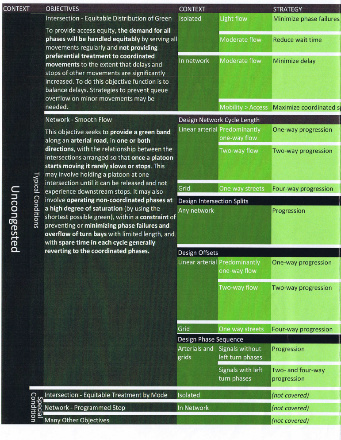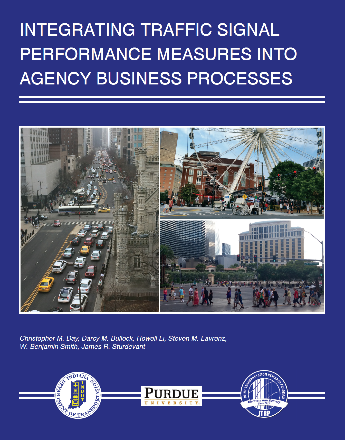Traffic Signal Management Plans
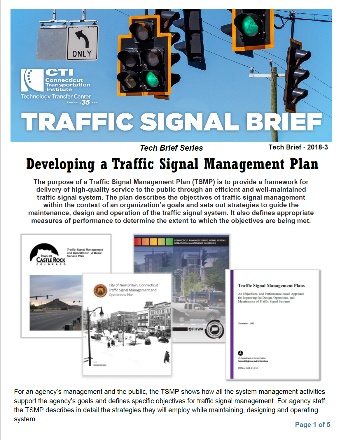
A quick reference on the benefits of developing a TSMP.
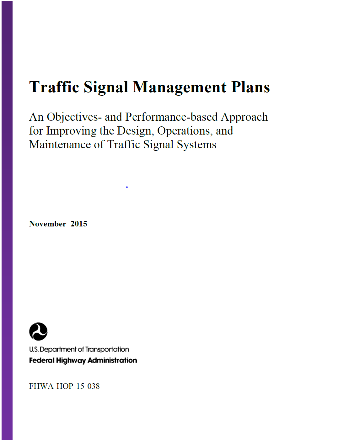
Step-by-step instructions for documenting current activities, relating them to the agency's goals and transportation objectives, and offers a structure that shows how the activities of all staff involved in traffic signal management support these objectives.
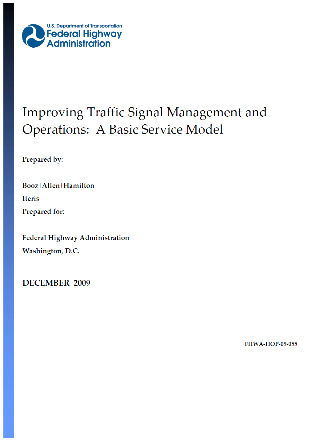
A guide for developing a Traffic Signal Management Plan based on achieving good basic service in the context of current agency capability and resources.
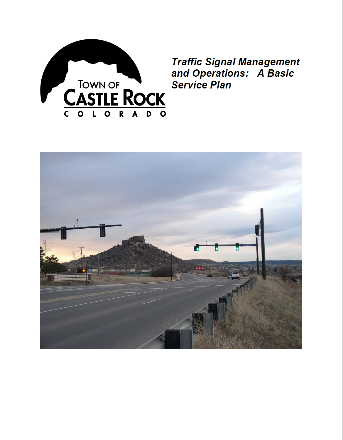
A template for a TSMP based on good basic service model.
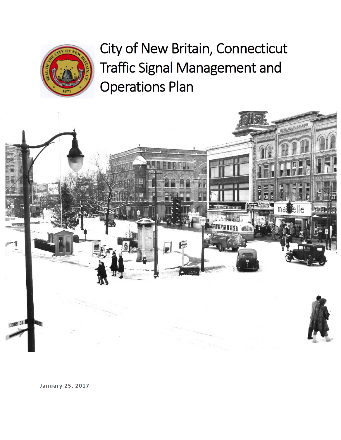
A template for a TSMP based on good basic service model.
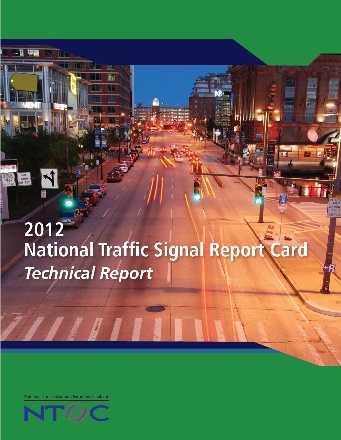
A summary of the state of the practice in traffic signal management and operations. Agencies can use as a diagnostic tool at the screening level to improve their traffic signal management.
Systems Engineering
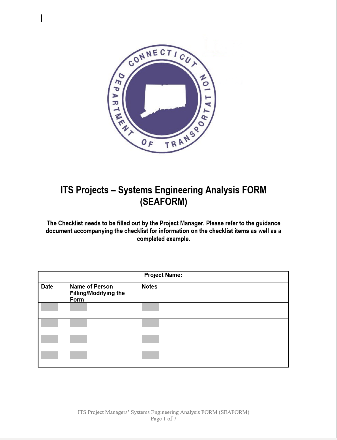
Form required when using State and Federal aid for municipal traffic signal projects.
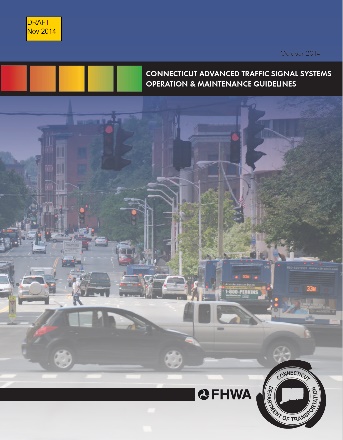
Guidance to promote consistency with CTDOT and FHWA requirements for system engineering processes.
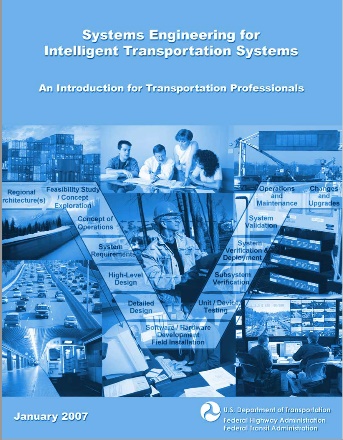
Provides an introduction for transportation professionals to systems engineering and a basic understanding of how it can be applied to planning, designing, and implementing intelligent transportation systems (ITS) projects.
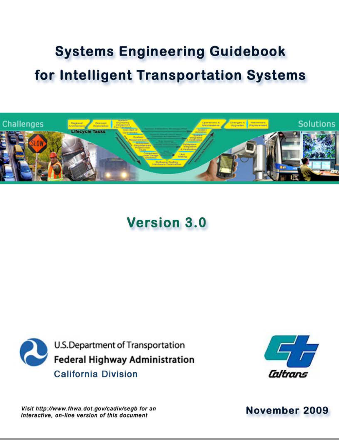
Contains extensive process tailoring advice, metrics, deliverable templates, suggested roles, responsibilities, and capabilities of agencies and contractors, and comprehensive checklists for each process task to assure that all bases are covered.
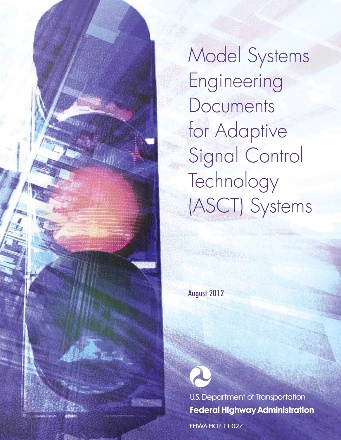
Guidance to address the risks associated with ASCT implementation. The process involves exploration of the agencies needs and faccilitates the development of requirements to facilitate the procurement of ASCT.
Traffic Signal Timing and Coordination
Signal Timing
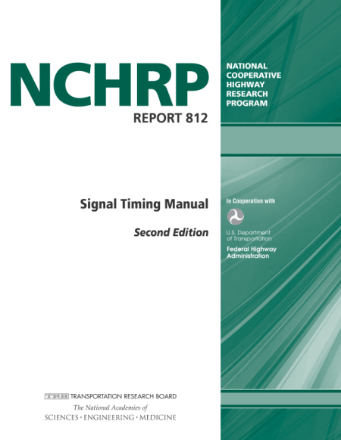
Provides guidance to promote a multimodal, objectives and performance based approach to development of traffic signal timing to address the needs of pedestrian, bicycles, transit and automobiles.
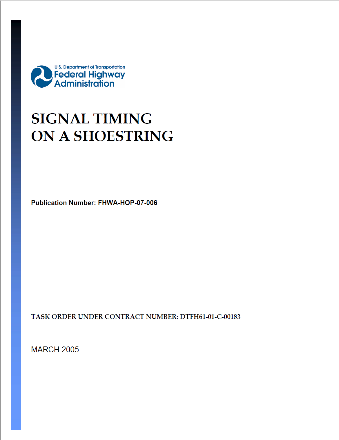
This effort documents the minimum amount of data collection and optimization that should be performed in a signal retiming to acquire some appreciable benefits. This is aimed at jurisdiction or municipalities that cannot afford to perform more extensive data collection and analysis.
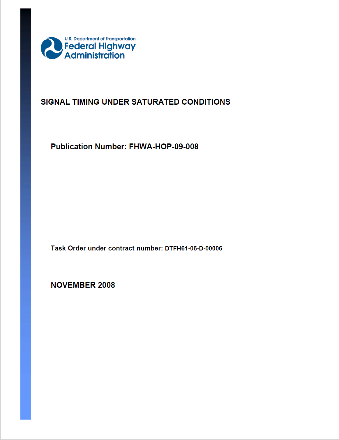
Under congested conditions, traditional objectives and performance measures shift from progression and minimizing delay to maximizing throughput and managing queues. The research revealed that long cycle lengths may not be more efficient at intersections where long queues starve turn lanes. In grid networks, the cycle length that is just long enough to reliably serve busses from a near-side stop was found through simulation to prevent the development of residual queues.
Performance Measures
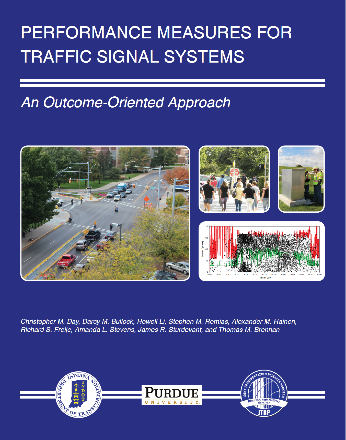
Looks at a methodology of using high-resolution data for performance measures for vehicles, non-vehicle, and preemption/priority modes.
Adaptive Signal Control Technologies
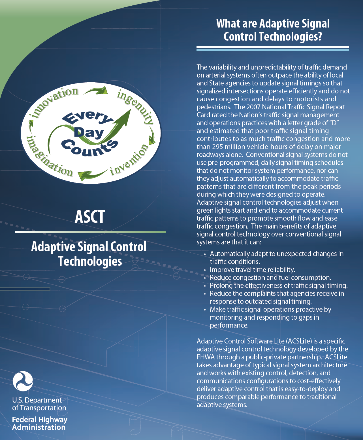
Provides an overview of adaptive signal control technologies, including FAQs.

Guidance to address the risks associated with ASCT implementation. The process involves exploration of the agencies needs and facilitates teh development of requirements to facilitate the procurement of ASCT.
Traffic Signal Design
Traffic Signal Design
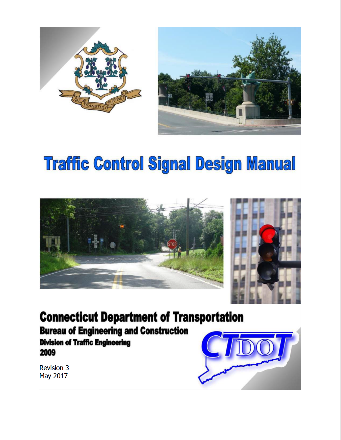
Guidance for considerations involved in the design of traffic control signals in Connecticut.
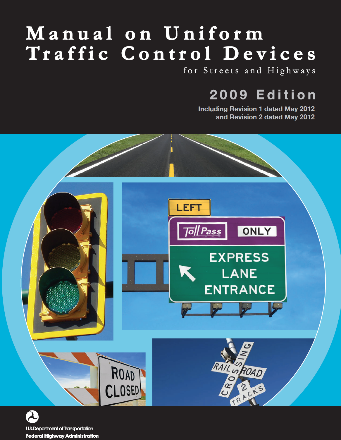
Defines the standards used to install and maintain traffic control devices on all public streets, highways, bikeways, and private roads open to public travel. The MUTCD is published by the Federal Highway Administration (FHWA) under 23 Code of Federal Regulations (CFR), Part 655, Subpart F.
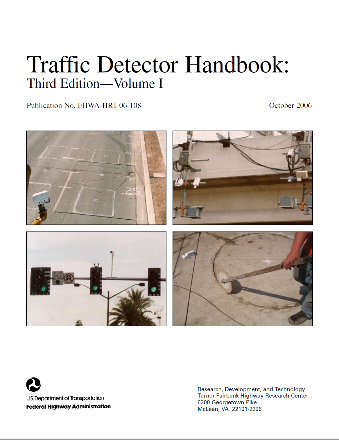
A comprehensive reference document to aid in selecting, designing, installing, and maintaining traffic sensors for signalized intersections.
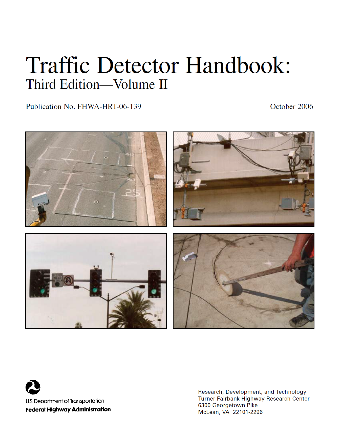
A comprehensive reference document to aid in selecting, designing, installing, and maintaining traffic sensors for signalized intersections.
Safety
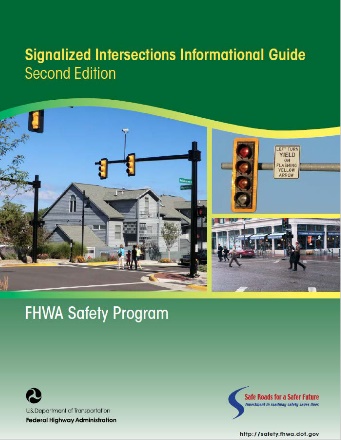
An introduction to and guide for evaluating the safety, design, and operations of signalized intersections. It also provides tools to deliver better balanced solutions for all users.
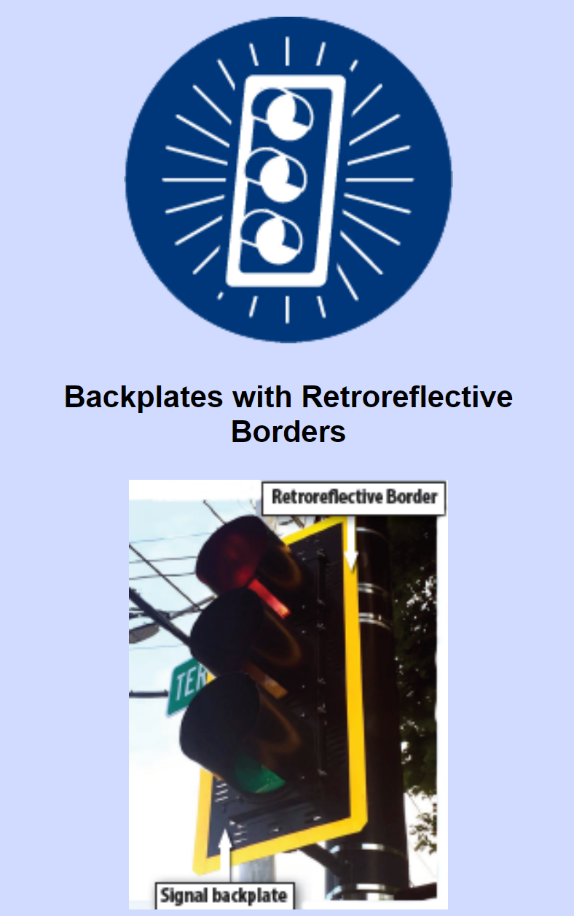
Backplates improve the visibility of the illuminated face of the signal by introducing a controlled-contrast background. Taken together with a retroreflective border the signal is made more visible and conspicuous in both daytime and nighttime conditions, which is intended to reduce unintentional red-light running crashes.
Pedestrian and Bicycle Considerations
The pedestrian hybrid beacon (also known as the High Intensity Activated crossWalK (or HAWK)) is a pedestrian-activated warning device located on the roadside or on mast arms over midblock pedestrian crossings. This site provides links to many resources.
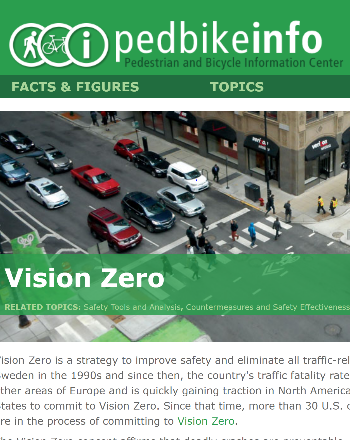
This series will provide participants with an in-depth exploration of some of the most effective countermeasures and design strategies that can be implemented to improve pedestrian safety. Includes webinars on rectangular rapid flashing beacons, pedestrian hybrid beacons, and leading pedestrian interval.
Traffic Signal Maintenance

Contains an appendix dealing with traffic signal operations and maintenance.
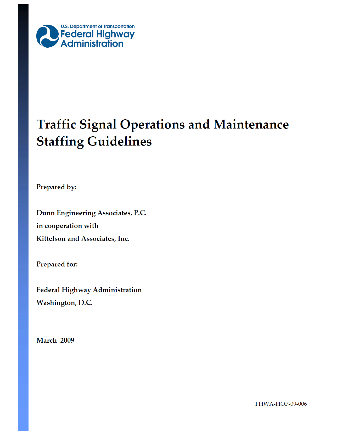
Provides guidelines for estimating staffing and resource needs required to achieve specific operations objectives.
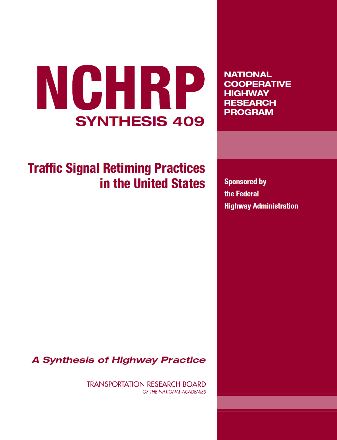
Discussin of state of the practice for signal retiming. Includes case studies showing the benefits of signal retiming projects.
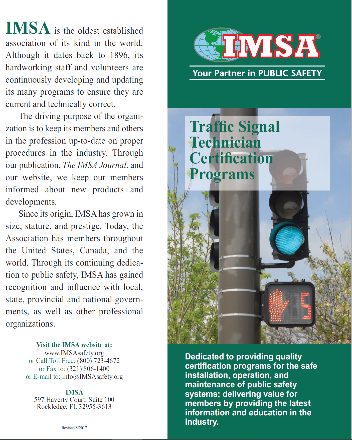
Information on the certification programs provided by the International Municipal Signal Association (IMSA).
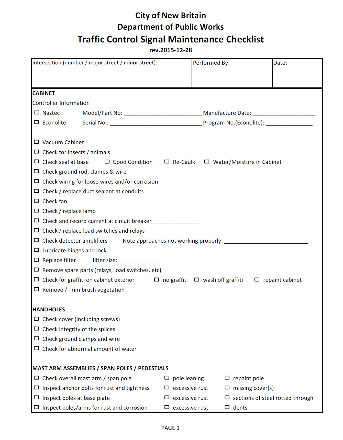
A local example of a preventative maintenance checklist.
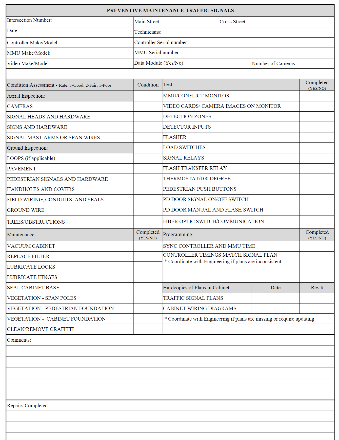
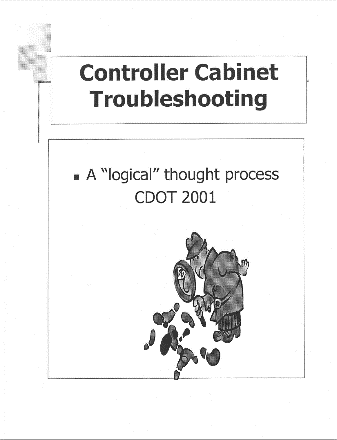
This resource includes flow charts to help troubleshoot common controller issues.
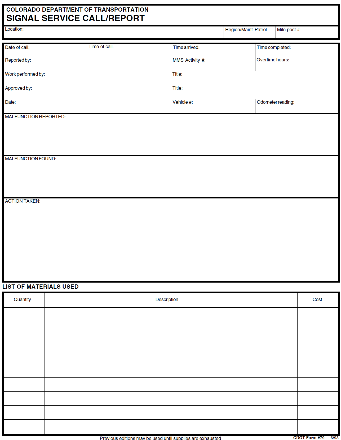
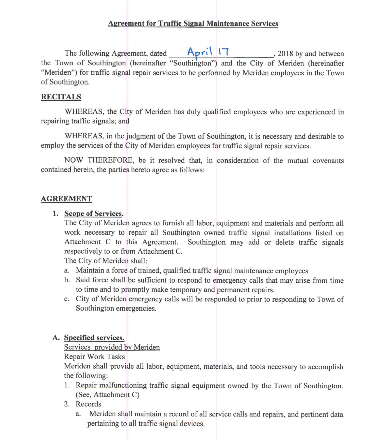
Example of a mutual aid agreement for traffic signal maintenance.

This volume focuses on installation (Chapter 5) and maintenance (Chapter 6).
Connecticut DOT Resources
Division of Traffic Engineering
Click here to Email the Division of Traffic Engineering- Traffic Control Signal Design Manual
- Traffic Special Provisions
- Traffic Standard Drawings
- Functional Specifications for Traffic Control Equipment
Bureau of Highway Design
- Highway Design Manual
- Highway Standard Drawings
- Form 818 Specifications
Bureau of Highway Operations ITS Engineering and Support
- Systems Engineering form (SEAFORM) for Municipal Traffic Management Systems
- Connecticut Statewide ITS Architecture
- Statewide Computerized Traffic Signal Systems (CTTS) Needs Assessment
Office of the State Traffic Administration
Click here to email the Office of the State Traffic Administration- Local Traffic Authority Guidance
- Traffic Control Signal Application Form
- About Us
- Training
- Technical Assistance
- Newsletters
- Information Exchange
- Special Programs
